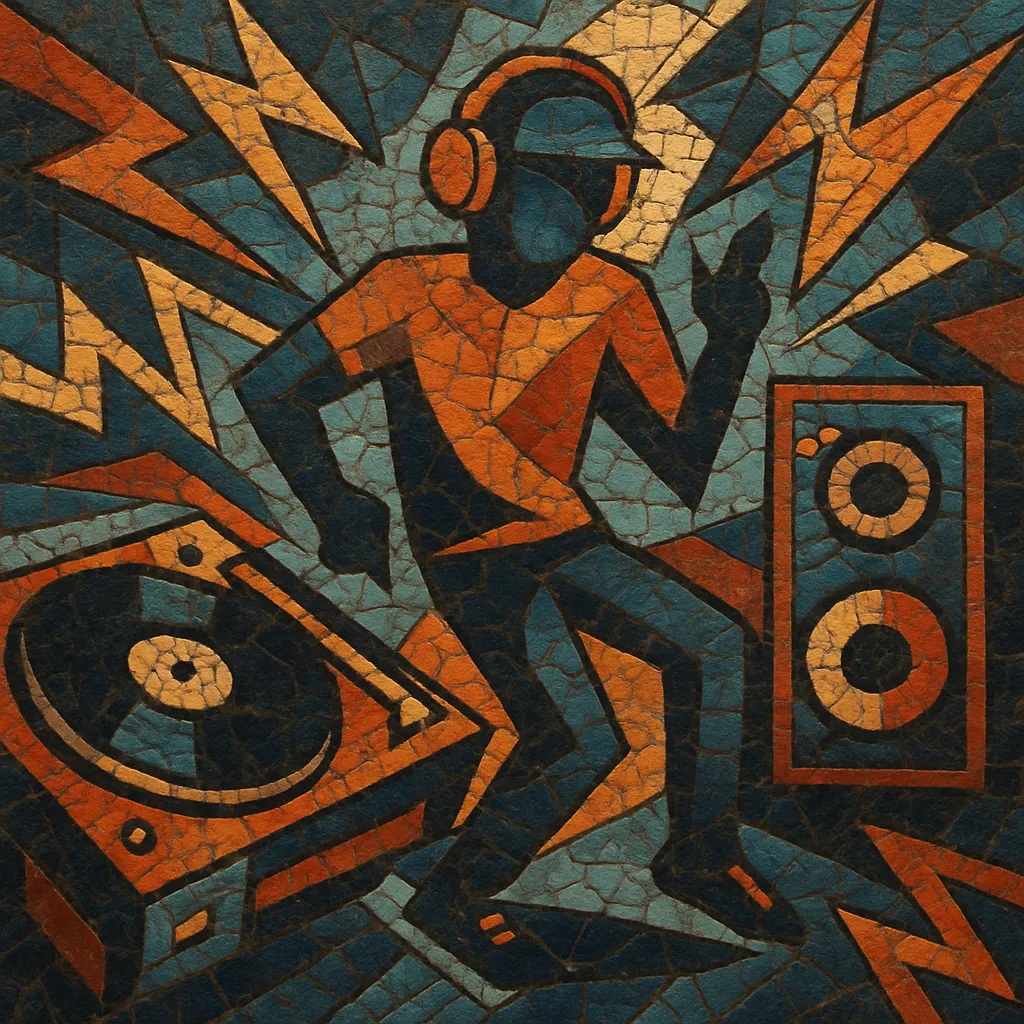Big beat is a high-energy style of electronic dance music built around heavy, looped breakbeats, overdriven drums, and bold, riff-driven hooks. It typically blends hip hop sampling techniques with the attitude and instrumentation of rock, creating an immediately impactful, party-focused sound.
Characterized by distorted basslines, chunky drum breaks, sirens, vocal shouts, and funk or rock samples, big beat favors maximalist, crowd-pleasing arrangements. It rose to mainstream prominence in the mid-to-late 1990s through UK acts who popularized it in clubs, on radio, and via music videos that emphasized its unruly, fun-loving aesthetic.
Big beat emerged in the United Kingdom, especially in Brighton and London, during the early-to-mid 1990s. Producers and DJs took the breakbeat ethos from hip hop and early UK rave, then amped it up with distorted bass, rock-style riffs, and sample-heavy hooks. Club nights such as the Big Beat Boutique (Brighton) and The Heavenly Social (London) helped codify the sound and community. Labels including Skint Records, Wall of Sound, and XL Recordings became important hubs.
The genre broke internationally with albums and singles that crossed over to mainstream charts and MTV. Landmark releases included The Chemical Brothers’ “Exit Planet Dust” (1995) and “Dig Your Own Hole” (1997), The Prodigy’s “The Fat of the Land” (1997), Fatboy Slim’s “You’ve Come a Long Way, Baby” (1998), The Crystal Method’s “Vegas” (1997), and Propellerheads’ “Decksandrumsandrockandroll” (1998). Big beat’s brash sonics, catchy vocal snippets, and rock-inflected showmanship made it a festival and radio staple.
By the early 2000s, tastes shifted toward sleeker styles such as electro house and nu skool breaks, while some big beat artists evolved into broader “electronica” or electronic rock directions. Although the scene’s commercial peak waned, its production vocabulary—crisp breakbeats, distortion, sample collage, and arena-sized hooks—continued to influence mainstream dance music, advertising, film trailers, and video games.
Big beat helped normalize a rock-meets-rave approach to electronic music performance, paving the way for electronic rock crossovers, new rave, and high-impact festival styles. Its emphasis on show-stopping drops and hooky sampling remains a template for party-focused dance tracks.


